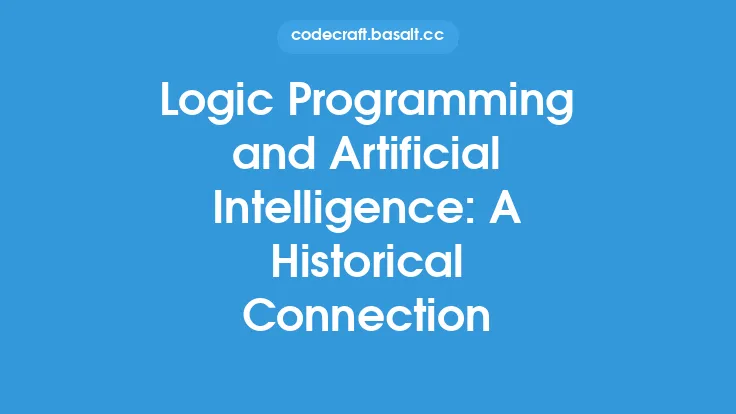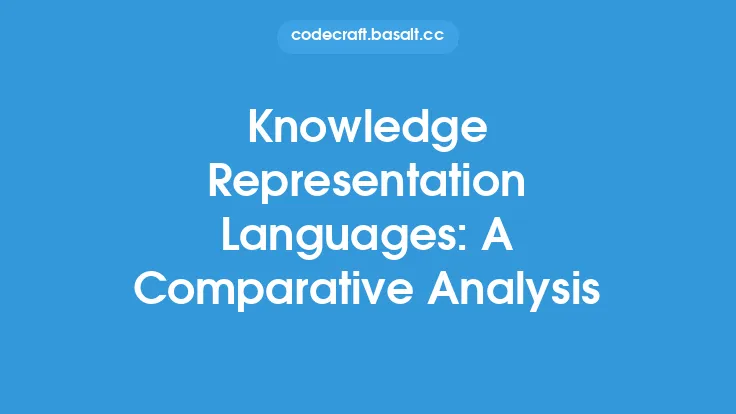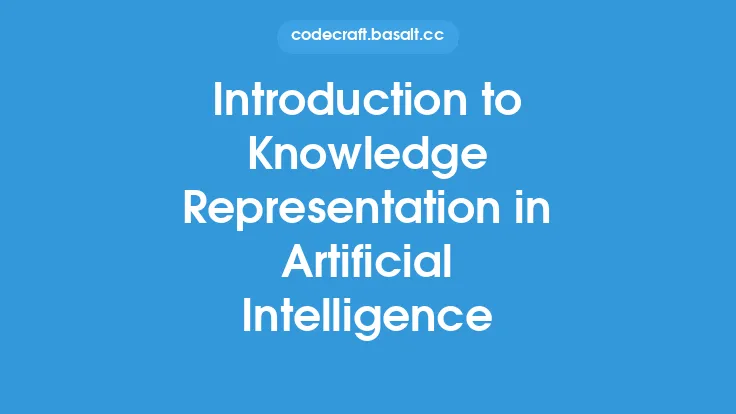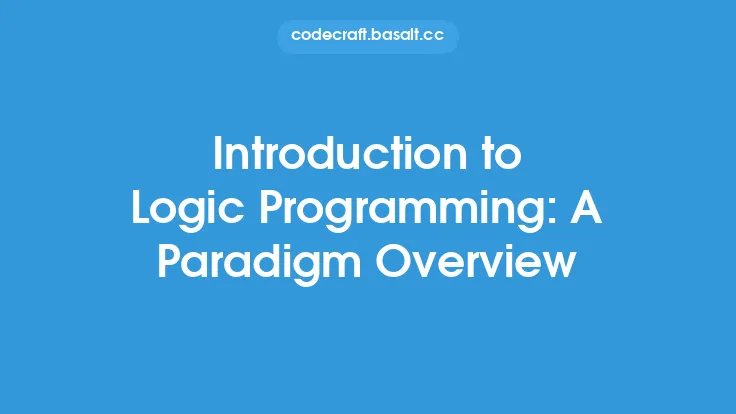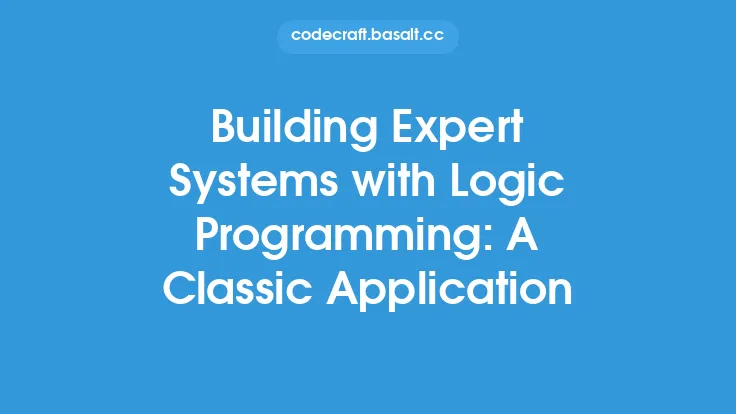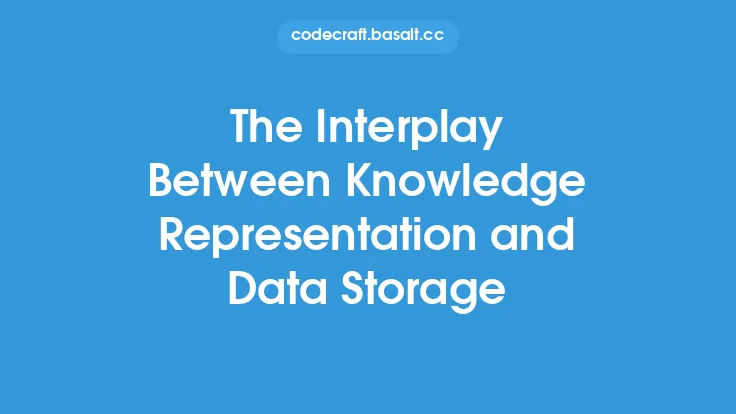Logic programming is a programming paradigm that is based on formal logic. It is a unique approach to programming that is centered around the concept of logical statements and rules. One of the key aspects of logic programming is its ability to represent knowledge in a natural and intuitive way. This is because logic programming is based on the idea of using logical statements to describe the world, and then using these statements to reason about the world.
Introduction to Knowledge Representation
Knowledge representation is a fundamental aspect of artificial intelligence and computer science. It refers to the way in which knowledge is represented and stored in a computer system. There are many different approaches to knowledge representation, including semantic networks, frames, and ontologies. However, logic programming provides a unique and powerful approach to knowledge representation. This is because logic programming allows for the representation of knowledge in a formal and rigorous way, using logical statements and rules.
The Connection Between Logic Programming and Knowledge Representation
Logic programming and knowledge representation are closely connected. In fact, logic programming can be seen as a way of representing knowledge in a formal and logical way. This is because logic programming is based on the idea of using logical statements to describe the world, and then using these statements to reason about the world. The logical statements used in logic programming are typically in the form of rules, which are used to represent the relationships between different pieces of knowledge. These rules can be used to reason about the world, and to make inferences about the knowledge that is represented.
Representing Knowledge Using Logical Statements
In logic programming, knowledge is represented using logical statements. These statements are typically in the form of rules, which are used to represent the relationships between different pieces of knowledge. For example, a rule might state that "if it is raining, then the streets are wet". This rule can be used to reason about the world, and to make inferences about the knowledge that is represented. The rules used in logic programming are typically represented using a formal syntax, such as Prolog or First-Order Logic.
Using Inference Engines to Reason About Knowledge
Inference engines are a key component of logic programming systems. They are used to reason about the knowledge that is represented, and to make inferences about the world. An inference engine takes the rules and facts that are represented in the system, and uses them to derive new conclusions. For example, if the system knows that "it is raining" and that "if it is raining, then the streets are wet", then the inference engine can conclude that "the streets are wet". Inference engines are typically implemented using algorithms such as forward chaining or backward chaining.
The Benefits of Using Logic Programming for Knowledge Representation
There are many benefits to using logic programming for knowledge representation. One of the main benefits is that it provides a formal and rigorous way of representing knowledge. This makes it easier to reason about the knowledge, and to make inferences about the world. Additionally, logic programming provides a flexible and extensible way of representing knowledge, which makes it easy to add new rules and facts to the system. Finally, logic programming provides a natural and intuitive way of representing knowledge, which makes it easier for humans to understand and work with the system.
Applications of Logic Programming and Knowledge Representation
Logic programming and knowledge representation have many applications in artificial intelligence and computer science. One of the main applications is in expert systems, which are computer systems that mimic the decision-making abilities of a human expert. Logic programming is also used in natural language processing, where it is used to represent the meaning of words and phrases. Additionally, logic programming is used in computer vision, where it is used to represent the relationships between different objects in an image.
Conclusion
In conclusion, logic programming and knowledge representation are closely connected. Logic programming provides a unique and powerful approach to knowledge representation, which is based on the idea of using logical statements to describe the world. The rules used in logic programming are typically represented using a formal syntax, and are used to reason about the world and make inferences about the knowledge that is represented. Inference engines are a key component of logic programming systems, and are used to derive new conclusions from the rules and facts that are represented. The benefits of using logic programming for knowledge representation include its formal and rigorous approach, its flexibility and extensibility, and its natural and intuitive way of representing knowledge. Overall, logic programming and knowledge representation are a natural fit, and have many applications in artificial intelligence and computer science.
